On a narrow, terraced field high up in the French Alps, I got down on my knees among the flowers and bees and tried to frame a shot without the long shadow of a photographer appearing. Sweet scent rose up all around and the mountains seemed to sparkle in the low sunshine as I photographed the unusual harvest of a crop that is worth more than gold: saffron.
A most feminine harvest
The few purple flowers popping up in clumps across this apparently forgotten area of patchy grass certainly didn’t indicate the site of a fruitful harvest, and there were no tractors, tools or solid, hairy-chested menfolk to be seen. Just two women, one with a baby strapped to her back, delicately plucking flowers from the earth, one-by-one, in the peace of the early morning. This, at first glance, is light work – the wicker basket that the women carried back to the farmhouse after harvesting all the blooms was only half full of l’or rouge (saffron is often known as ‘red gold’) – but that was enough.
Wedding present
The saffron crocus (Crocus satavia) has been cultivated in Europe for over 2000 years, and the dried stamens (the female part of the flower) have consistently remained one of the world’s most expensive substances by weight. Saffron may be used for dying fabric, for its various medicinal properties and, most famously today, for its culinary uses. Just a few filaments of dried saffron are enough to give a potent flavour and rich yellow-orange colour to dishes such as risotto and the Provençal fish stew bouillabaisse.
Before the French Revolution, France produced tonnes of precious saffron every year, but production declined rapidly afterwards. By the early 1990s, there were only a handful of saffron growers left throughout the country. However, something of a saffron renaissance is taking place, notably in the South of France – today there are 90 saffron growers in Provence alone.
Organic market gardeners close to Puget-Théniers, a market town 60 km north of Nice, Agnès and Renaud Papone were given 6,000 saffron bulbs as a wedding gift three years ago. Certainly unusual as wedding presents go, the gift would have been a poisoned chalice had they been shy of hard work.
Big work for small rewards
Though saffron harvesting is not difficult per se, the production of dried saffron is extremely labour-intensive. In autumn, the crocuses bloom for a period of 2-3 weeks and, at this point, producers need to drop everything and devote themselves to the harvest. The ideal window of opportunity to hand-pick each day’s new blooms is quite narrow. The morning dew needs to have dried, but the flowers must be plucked early, before the sun has started to wilt them. The grade of the saffron they will produce declines rapidly with exposure to UV light. The stigmas must then be taken out of the flowers, dried that same day (at a precise temperature for a precise duration), and then stored for 2 months, in order for the flavour to fully develop.
Separating the flower parts is, in itself, a pernickety process. Each flower has one bright red stigma divided into three filaments that need to be gently pulled away from the rest of the flower using the fingertips, without squashing or ripping them apart. I discovered that the patience I have as a photographer didn’t translate to patience with these fine, tiny flower parts. Once my attempts had been enough to dye my fingers a respectably deep yellow, I ducked back behind my camera.
The reward for all of this work, once gathered together, seems pretty underwhelming. The jar containing the dried result of Agnès and Renaud’s harvest last year was barely half full. However, supplying organic saffron at between 25€ and 30€ a gram to a hungry public on the nearby French Riviera, makes the mini result of a saffron harvest worthwhile for them (dried saffron is worth around 30 times the value of black truffles: you can read my blog post about photographing truffle hunters in the South of France here ).
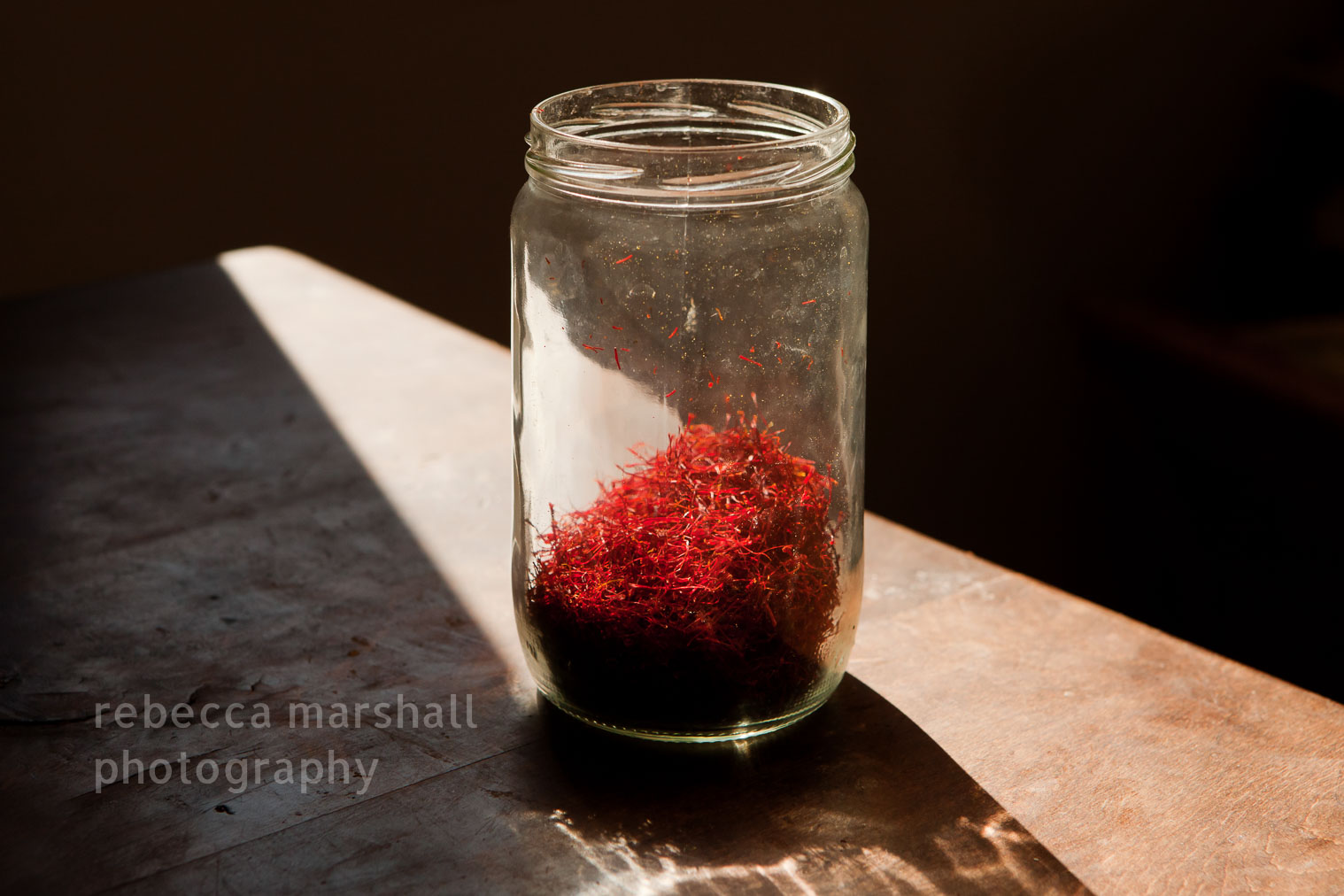
The result of 2012’s saffron harvest: 52 grams don’t look much to show for 6000 saffron bulbs and two week’s hard labour
Drunk bumblebees
If I was nonetheless wowed by the beauty and sweet perfume of the petals piled up in the basket (which reminded me of doing a reportage about perfume production today in Grasse), I wasn’t alone. Dozens of bumblebees were tipped out onto the dissection table with the blooms – and they just stayed there, stretched out with the flowers.
“They are attracted to the flowers to drink the nectar – and then pretty quickly they become strangely dopey, behaving as if they were drunk” said Agnès.
However, as I dazedly smelled the flowers and watched the blissed-out bees, I was quickly reminded that the scent of saffron crocuses is a mere distraction from the real business of the day. Agnès drew me away into the kitchen to sniff a plate of previously dried red stamens instead, and the pungent scent was a wake-up call; nothing like the sweet-smelling petals. Saffron gives off a unique, heady, spicy and complex smell. Certainly not at all what you might expect to be hidden within these pretty, dainty flowers, which, once denuded of their valuable secret, are simply thrown away (or rather composted, in this case).
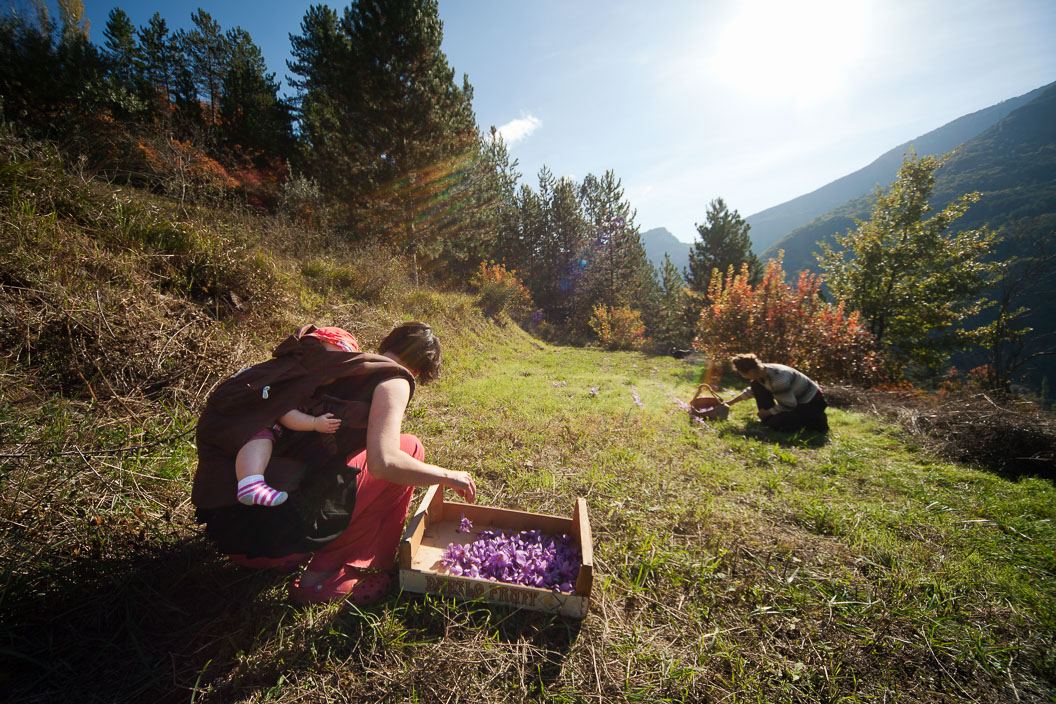
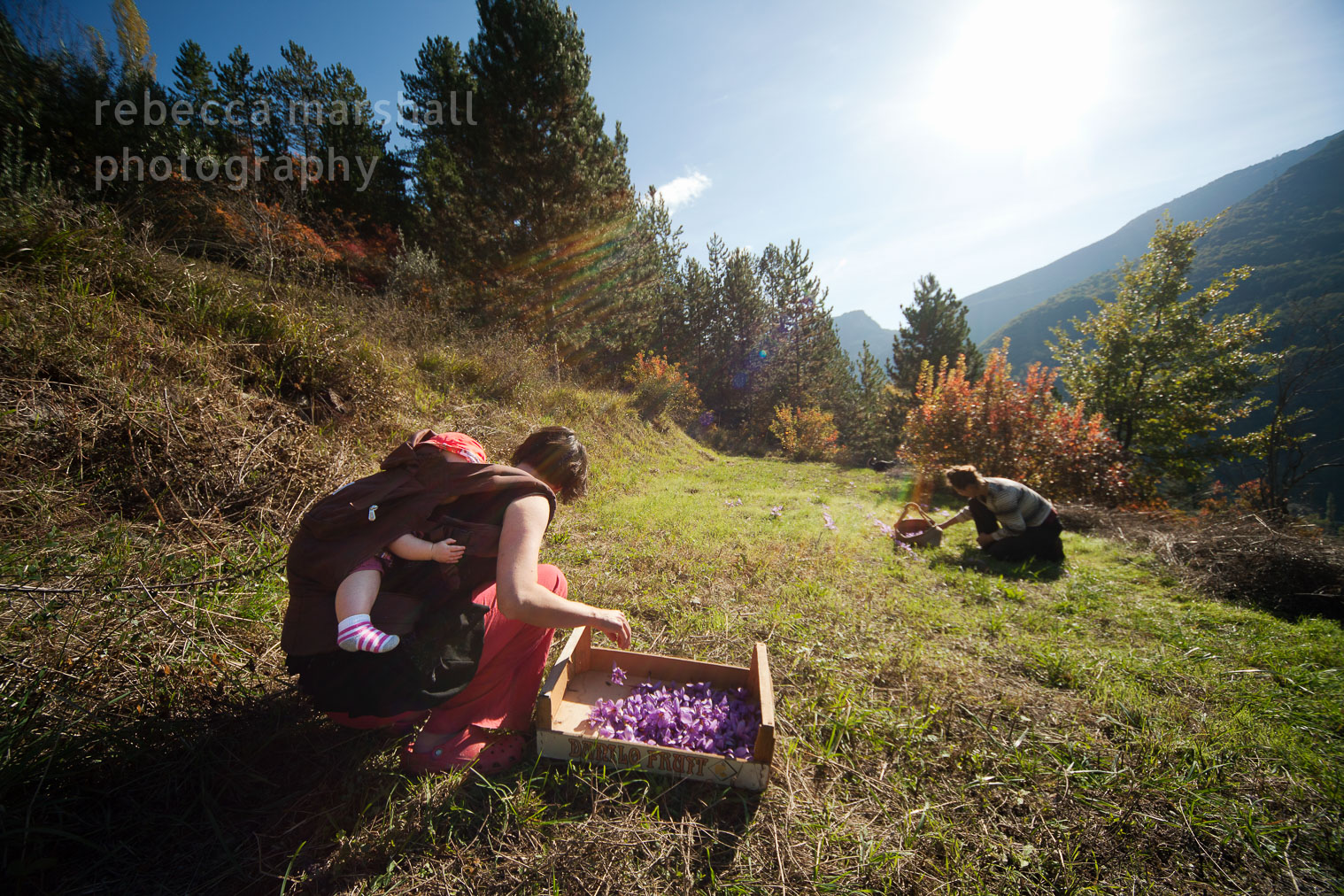
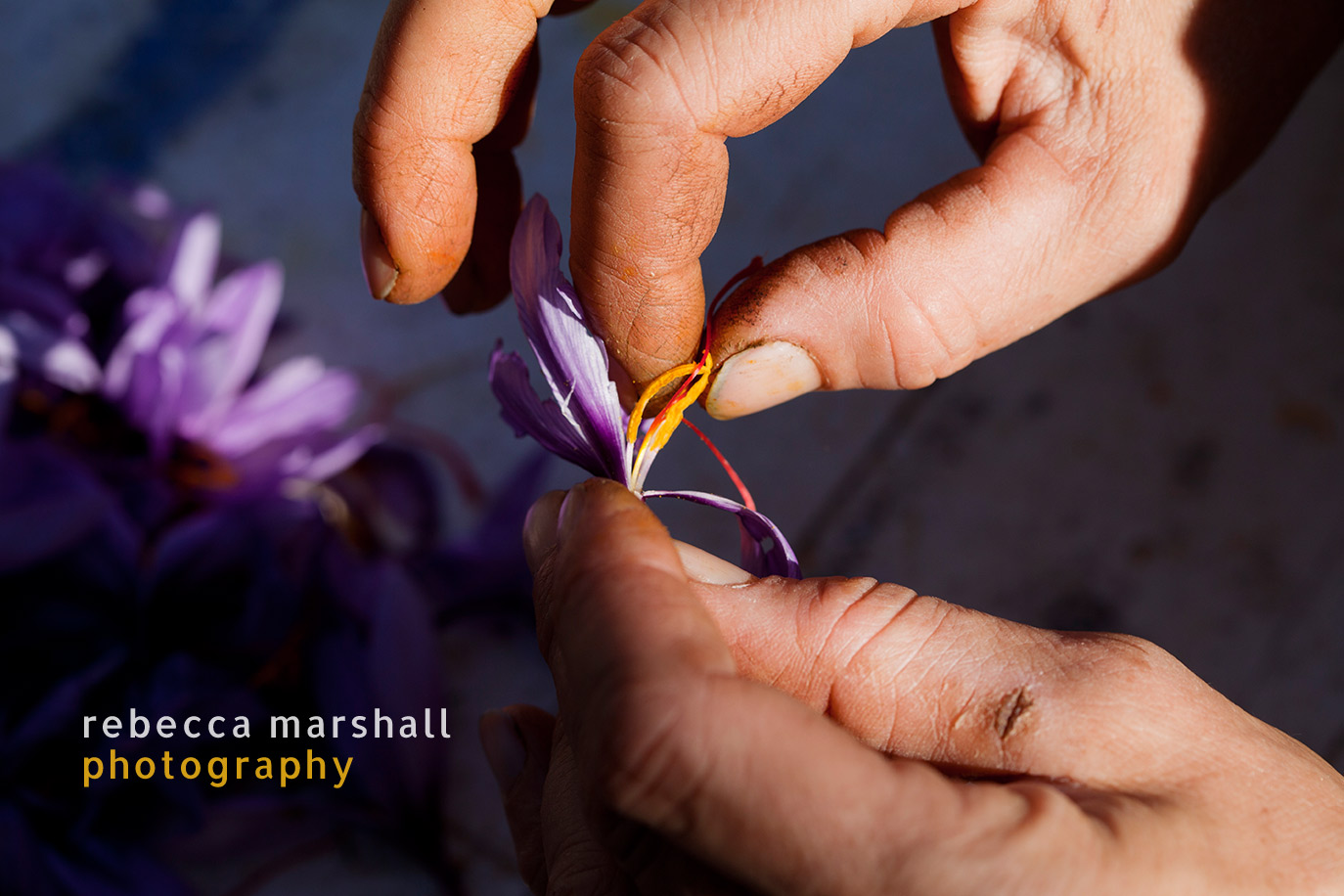
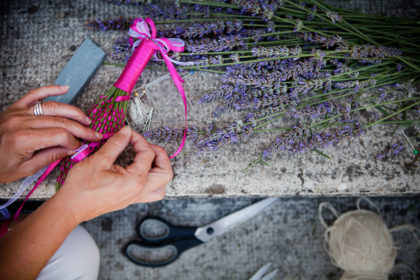
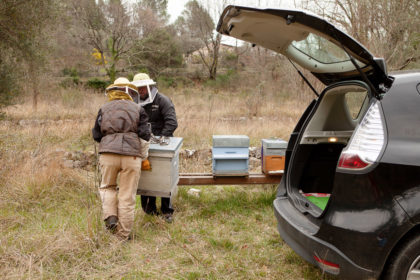
Bilal Bhat
Aug 2, 2014 at 6:31 pm
The pictures are simply awesome
Rebecca Marshall
Aug 2, 2014 at 6:41 pm
Thank you for your positive feedback Bilal